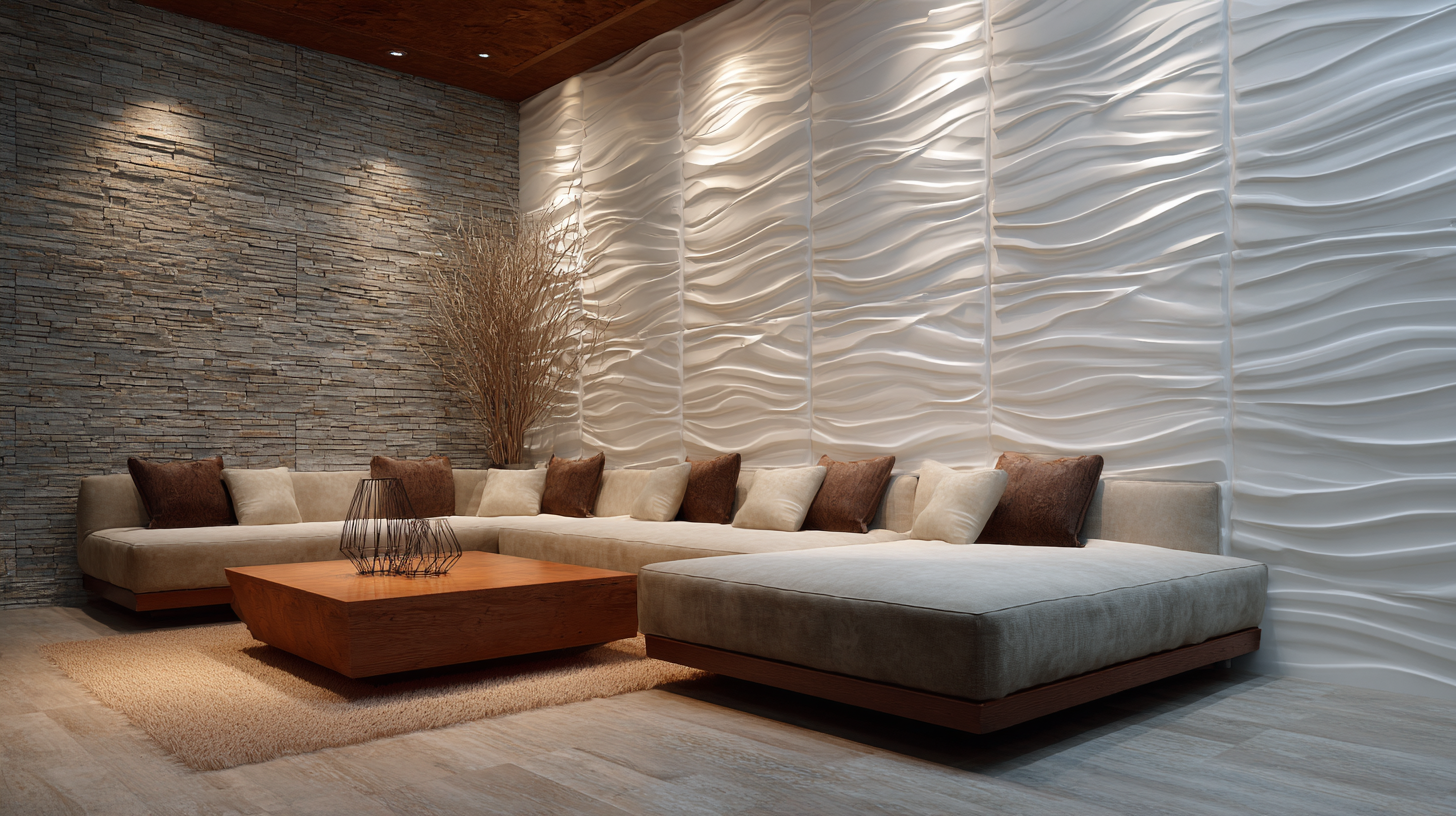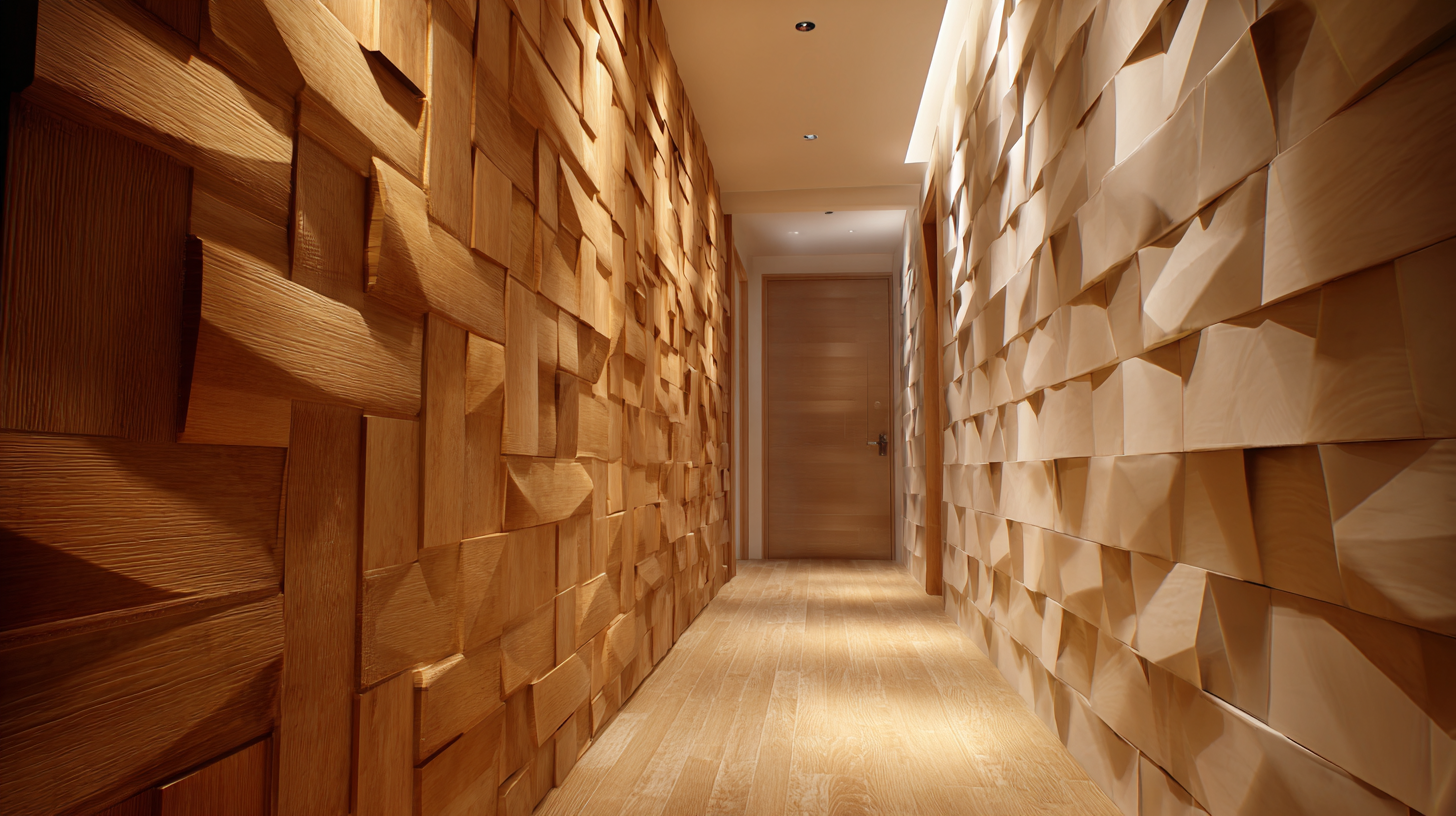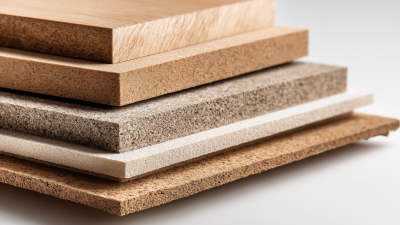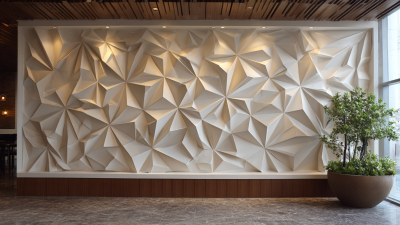
- Ginazhao@wanglumaterial.com
- Mon - Sat at 7:00AM to 9:00PM



In the ever-evolving world of interior design, the use of WPC wall panels has emerged as a transformative solution, marrying aesthetics with functionality. According to a recent report by Grand View Research, the global WPC market is expected to reach USD 9.3 billion by 2025, growing at a CAGR of 11.5%. This surge can be attributed to the rising demand for sustainable materials and innovative design solutions. WPC wall panels, made from a blend of wood and plastic, offer durability and versatility, making them ideal for both residential and commercial spaces. As designers seek to create modern environments that blend style with practicality, WPC wall panels provide an effective means to achieve such goals while also contributing to eco-friendly initiatives. In this guide, we will explore innovative uses of WPC wall panels that can elevate any space and enhance overall design principles.

WPC (Wood Plastic Composite) wall panels are revolutionizing contemporary interior design with their versatility and aesthetic appeal. These panels can serve as striking feature walls in living rooms, where their natural wood-like appearance adds warmth and sophistication. By incorporating bold colors or unique textures, designers can create an eye-catching focal point that enhances the overall ambiance of the space. Additionally, WPC panels can be used in corridors and entryways to evoke a sense of luxury and welcome, making them an ideal choice for both residential and commercial applications.
Another innovative way to utilize WPC wall panels is in creating functional spaces. For instance, they can be employed as stylish acoustic panels in home theaters or offices, providing both sound insulation and visual interest. Moreover, WPC panels are water-resistant, making them suitable for bathrooms and kitchens where moisture is a concern. By combining practicality with aesthetic sensibility, interior designers can transform these typically overlooked areas into modern sanctuaries, elevating the overall design approach to a new level of creativity.
WPC (Wood Plastic Composite) wall panels are revolutionizing interior design by offering a perfect blend of sustainability and style. These panels are crafted from recycled wood fibers and plastic, making them an eco-friendly alternative to traditional materials. By integrating WPC wall panels into modern living spaces, homeowners can enjoy not only aesthetic appeal but also a reduced environmental footprint. The ability of WPC materials to withstand moisture and resist pests further enhances their longevity, making them a smart choice for any room.
Incorporating WPC wall panels allows for innovative design possibilities. From sleek, minimalist finishes to textured accents that add depth and character to spaces, these panels offer versatility in style. Whether used as feature walls, room dividers, or even ceilings, they can transform an entire environment. Moreover, WPC panels come in various colors and finishes, enabling customization that aligns with any design vision. Embracing WPC wall panels means creating inviting, stylish spaces that reflect a commitment to sustainability, perfect for the modern homeowner focused on both form and function.
| Application Area | Benefits | Design Styles | Sustainability Features |
|---|---|---|---|
| Living Room | Aesthetic appeal, easy maintenance | Modern, Minimalist | Recyclable materials, low carbon footprint |
| Outdoor Spaces | Weather resistance, durability | Contemporary, Rustic | Sourced from recycled wood and plastic |
| Commercial Spaces | Cost-effective, versatile design | Industrial, Urban | Sustainable harvesting practices |
| Bathrooms | Water resistance, easy to clean | Spa, Contemporary | Non-toxic materials, low energy consumption |
| Accent Walls | Unique focal point, customizable | Artistic, Eclectic | Long-lasting and durable |
WPC (Wood-Plastic Composite) wall panels have emerged as a versatile solution for transforming commercial spaces, offering both aesthetic appeal and functional benefits. According to industry reports, the global WPC market is expected to reach $9.3 billion by 2027, driven by increasing demand for sustainable and durable building materials. These panels not only provide a modern look but also ensure longevity, making them a practical choice for high-traffic environments like offices, restaurants, and retail.
In commercial applications, WPC wall panels can redefine the ambiance of a space while contributing to environmental goals. Studies reveal that WPC materials can significantly reduce energy consumption in buildings due to their insulation properties. With innovative designs ranging from sleek, minimalist aesthetics to textured finishes that mimic natural wood, businesses can create unique environments that enhance customer experience and encourage social interaction. Moreover, the ease of installation and low maintenance requirements highlight the practicality of incorporating WPC panels into modern architectural design.
The following bar chart illustrates the percentage of different innovative uses for WPC Wall Panels in modern design across various commercial spaces.
WPC (Wood Plastic Composite) wall panels have emerged as a revolutionary material in modern design, providing an array of color and texture variations that significantly enhance aesthetics. According to a report by Research and Markets, the global WPC market is projected to reach $9.2 billion by 2028, emphasizing the growing popularity and application of this versatile material in residential and commercial spaces. The ability to mimic natural wood grain while offering greater durability and resistance to the elements makes WPC panels a preferred choice for designers and homeowners alike.
The utilization of WPC panels not only adds visual interest but also allows for creative freedom in interior and exterior applications. With finishes available in both matte and glossy textures, as well as a spectrum of colors from earthy tones to vibrant hues, these panels can seamlessly complement various design styles, from contemporary to rustic. A study published in the Journal of Sustainable Materials highlights that integrating materials like WPC contributes to energy efficiency, further appealing to eco-conscious consumers. As the demand for innovative and sustainable design solutions rises, WPC wall panels stand out as a viable option for transforming spaces while enhancing their aesthetic appeal.

 WPC (Wood Plastic Composite) wall panels have emerged as a game-changer in modern architecture, blending functionality with aesthetic appeal. One of the most innovative installation techniques is the use of a concealed fastening system, which not only provides a seamless appearance but also enhances the durability of the panels. This method minimizes visible screws or nails, allowing the natural beauty of the wood-like texture to take center stage. Moreover, this technique reduces the chances of moisture intrusion, thereby increasing the longevity of the installation.
WPC (Wood Plastic Composite) wall panels have emerged as a game-changer in modern architecture, blending functionality with aesthetic appeal. One of the most innovative installation techniques is the use of a concealed fastening system, which not only provides a seamless appearance but also enhances the durability of the panels. This method minimizes visible screws or nails, allowing the natural beauty of the wood-like texture to take center stage. Moreover, this technique reduces the chances of moisture intrusion, thereby increasing the longevity of the installation.
Tip: When selecting WPC wall panels, consider choosing interlocking designs for easier installation and a streamlined finish. These panels can be quickly assembled, reducing labor time and overall project costs.
Another effective installation method is the utilization of a modular approach, where panels are prefabricated in sections. This technique helps in achieving uniformity and quick deployment, especially in larger projects. Additionally, combining various panel sizes can create dynamic visual effects while maintaining structural integrity.
Tip: Ensure the surface is clean and dry before installation, as this will enhance adhesive properties and help maintain the panel's alignment throughout the years.





